The complete guide to home viewing
Get Screen Gab for everything about the TV shows and streaming movies everyone’s talking about.
You may occasionally receive promotional content from the Los Angeles Times.
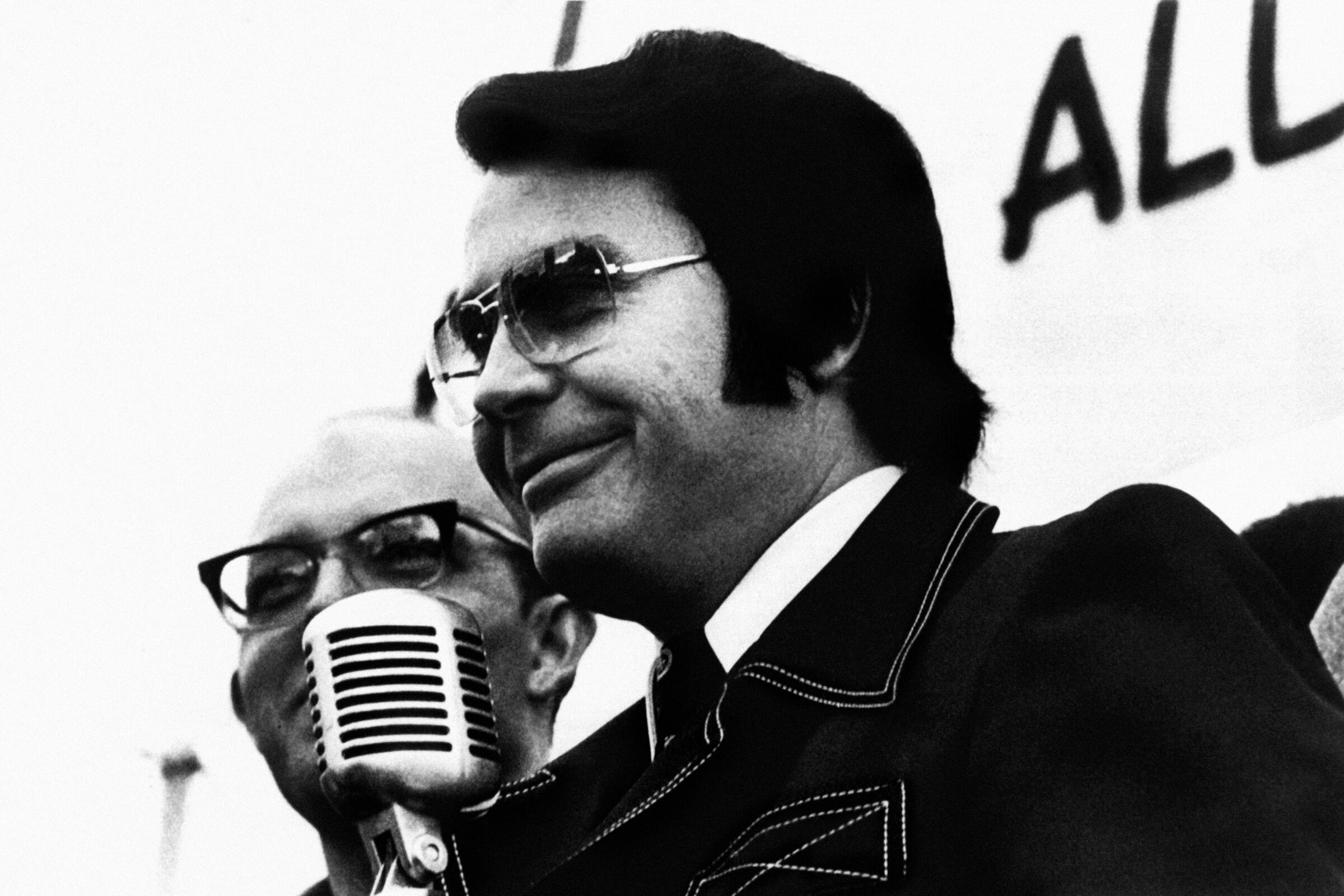
Call it a sign of the strange times in which we live, when disinformation and conspiracy theories run rampant on social media, but a decade after TV’s true crime renaissance began, the cult documentary is having a breakout moment. In 2023 alone, we had dueling series about Twin Flames Universe, “Love Has Won: The Cult of Mother God,” an exploration of Larry Ray and the so-called “sex cult” at Sarah Lawrence, and a four-part documentary on Synanon, the Santa Monica drug-rehab program turned armed extremist group.
For those who can’t get enough content about new religious movements, high-control groups and spiritual sects of all kinds, we’ve compiled a list of the best documentaries on the subject you can stream right now.
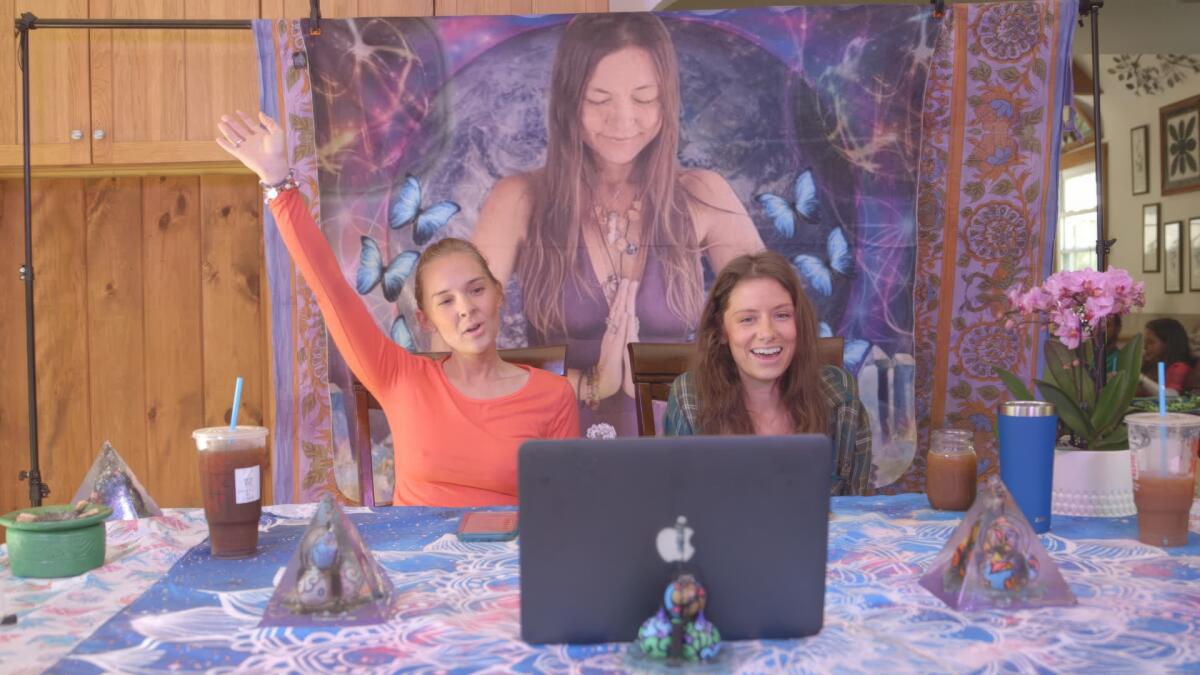
“Love Has Won: The Cult of Mother God” (Max)
This documentary opens with bodycam footage of police discovering the mummified body of a woman named Amy Carlson, wrapped in a sleeping bag and Christmas lights — and it only gets more disturbing from there. Better known to her followers as “Mother God,” Carlson led a small, cult-like group called Love Has Won, which was based in the tiny town of Crestone, Colo., and espoused an incoherent mishmash of New Age spirituality and internet conspiracy theories such as QAnon. The group also believed it was guided by the “Galactics,” an eclectic mix of (mostly dead) celebrities that included Steve Irwin, Robin Williams, Carrie Fisher and Donald Trump. In livestreams, they preached the virtues of marijuana and alcohol as “medicine” and peddled dubious products such as colloidal silver.
Directed by Hannah Olson, this riveting three-episode series chart’s Carlson’s strange journey from Kansas-born mother of three and McDonald’s manager to self-proclaimed spiritual guru. Instead of relying on cult experts or academics to provide context, Olson largely tells this story from the perspective of Carlson and her followers — making “Love Has Won” a truly unsettling watch.
TV critic and true-crime buff Lorraine Ali selects the 50 best true-crime documentaries you can stream on Netflix, HBO Max, Hulu, Prime Video and more.
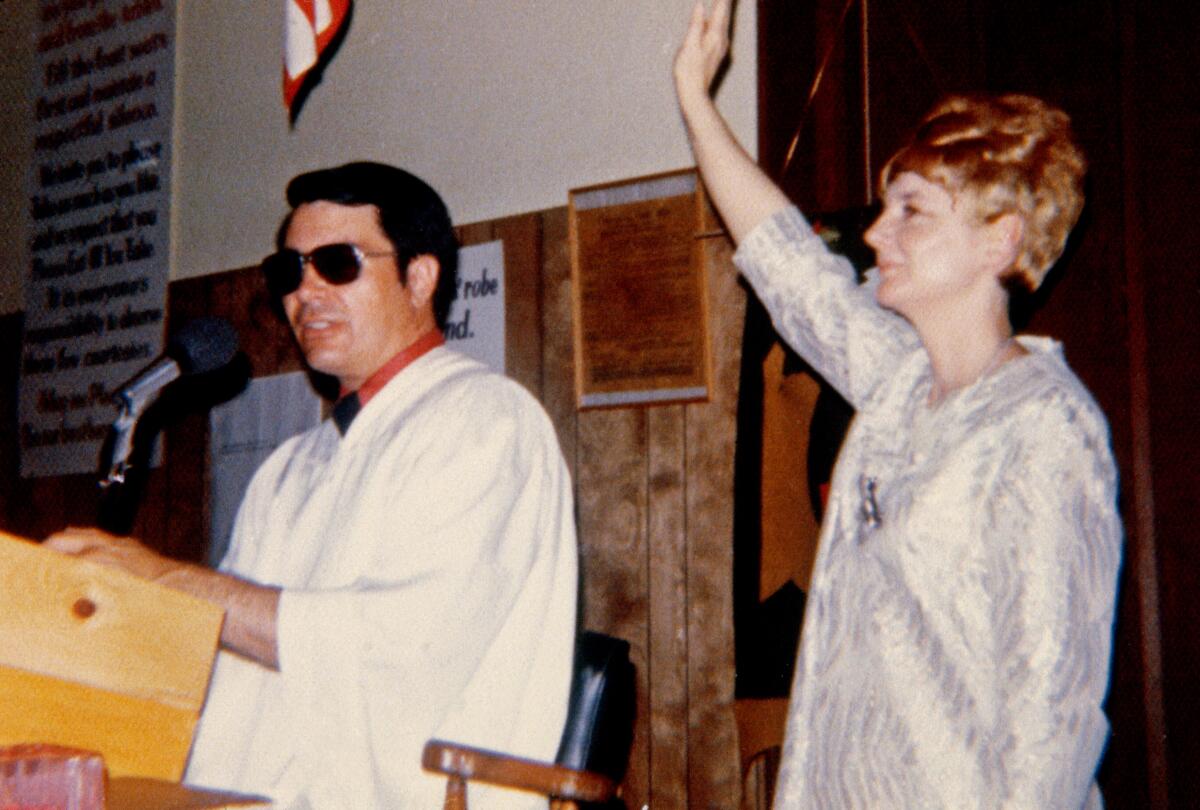
“Jonestown: The Life and Death of Peoples Temple” (Kanopy) and “Jonestown: Terror in the Jungle” (AMC+)
It has been 45 years since more than 900 members of Peoples Temple — some 250 of them under the age of 18 — died by ingesting cyanide-laced fruit punch in the jungles of Guyana in a mass murder-suicide. The question of how Jim Jones, a power-mad, drug-addicted con artist, was able to persuade them to do the unthinkable continues to haunt the collective memory — and sits at the heart of these documentaries, which avoid sensationalism and earnestly attempt to grapple with the appeal of Peoples Temple. Both feature interviews with the scant few members who made it out of Jonestown alive and include chilling audio and video footage of Jones’ final, frenzied hours.
Directed by veteran filmmaker Stanley Nelson, “Jonestown: The Life and Death of Peoples Temple” is particularly effective at demonstrating how the charismatic preacher built a large, diverse congregation using a message of economic equality and racial justice. Based on Jeff Guinn’s book “The Road to Jonestown,” which was released to coincide with the 40th anniversary of Jonestown in 2018, “Terror in the Jungle” also examines the painful aftermath for traumatized survivors, who faced invasive media coverage, public scorn and painful jokes about Kool-Aid.
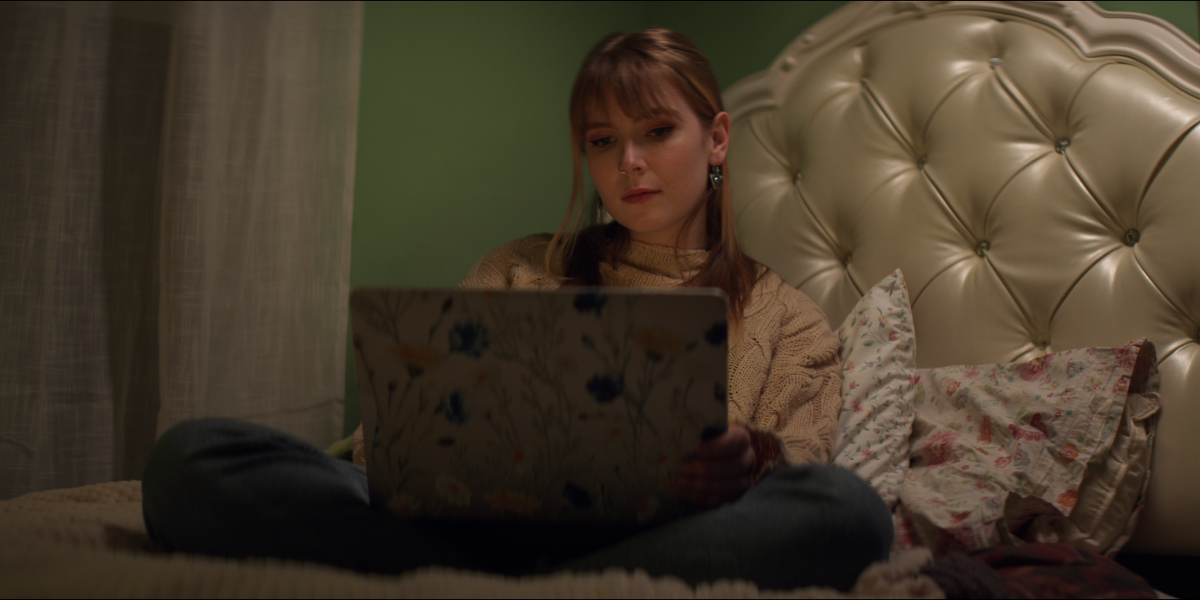
“Escaping Twin Flames” (Netflix) and “Desperately Seeking Soulmate: Escaping Twin Flames Universe” (Prime Video)
Twin Flames Universe is a spiritual community and self-help program that promises to help singles find their “twin flame,” or ideal romantic partner. Two documentaries, both released this fall, center on Jeff and Shaleia Ayan, the married couple who started TFU by rebranding the age-old concept of a “soul mate” and selling it to a generation weary of dating apps. The Ayans not only convinced their followers to pay for expensive junk food diets and online classes, they allegedly encouraged them to take extreme, bizarre measures in order to achieve a “harmonious twin flame union” — cutting off family members and even transitioning gender.
Directed by Cecilia Peck, “Escaping Twin Flames” focuses more on former members traumatized by their involvement with TFU — and the parents and siblings desperate to reconnect with indoctrinated loved ones. “Desperately Seeking Soulmate,” directed by Marina Zenovich, reveals more about the Ayans’ backstory and how two utterly average millennials harnessed the power of the internet to become wealthy, self-styled dating gurus who wielded enormous control over their followers, all from the comfort of their Michigan living room.
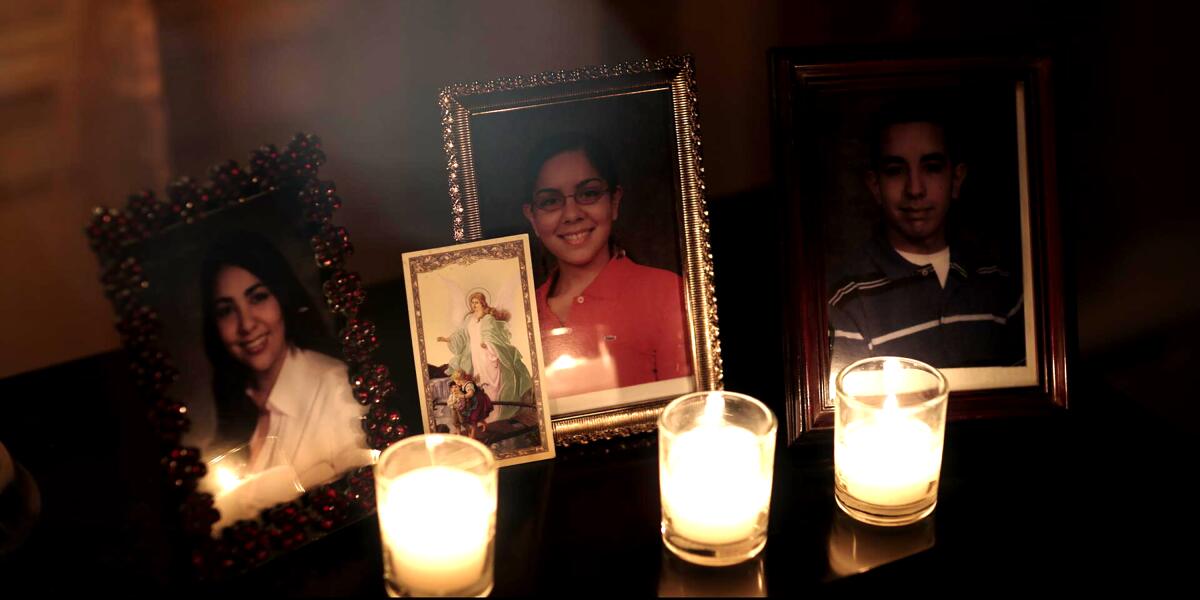
“Stolen Youth: Inside the Cult at Sarah Lawrence” (Hulu)
“Stolen Youth: Inside the Cult at Sarah Lawrence” tells the baffling, heartbreaking story of how Larry Ray, a middle-aged father, moved into his daughter’s dorm at Sarah Lawrence College in suburban New York, befriended her roommates and proceeded to coerce and abuse them for the next decade. (Ray was convicted in 2022 on federal charges of sex trafficking, extortion and racketeering.)
Directed by Zach Heinzerling, “Stolen Youth” doesn’t really explain what made Ray so alluring, and viewers are left to contemplate the mystery of why these accomplished, well-meaning young people derailed their lives for such an obvious charlatan. The lack of a clear answer makes the series all the more powerful.

“Shiny Happy People: Duggar Family Secrets” (Prime Video)
This four-part documentary peels back the Duggars’ wholesome reality TV facade to explore the infamous family’s connections to the Institute in Basic Life Principles, an ultraconservative, highly influential religious ministry that many former adherents, including Jill Duggar, have described as a cult. Its founder, Bill Gothard, promoted total female submission to male authority, urging his followers to shun birth control, short skirts and public school — yet has been accused of sexual misconduct involving numerous women and girls.
Directed by Julia Willoughby Nason and Olivia Crist, “Shiny Happy People” makes the case that “19 Kids and Counting” and spinoff “Counting On” put an anodyne gloss on the Duggars’ extreme fundamentalism and served as a televised ministry. It also connects the dots between the group’s hardline teachings, the political power of the Christian right and the downfall of Jim Bob and Michelle Duggar’s eldest son, Josh, who was convicted of possessing and receiving child pornography and is now serving a 12½-year prison sentence.
‘Shiny Happy People’ dives into the fall of the Duggars, stars of TLC’s ’19 Kids and Counting’ and its spinoff. Here are six revelations from the series.

“Wild Wild Country” (Netflix)
When this series was released in 2018, few Americans remembered the bizarre saga of the Rajneeshees, devotees of a Rolls Royce-driving Indian mystic named Bhagwan Shree Rajneesh (later known as Osho) who came to national attention in the mid-1980s when they were accused of poisoning hundreds of people via restaurant salad bars. The hit documentary turned the forgotten cult — known for its red and orange clothing — into a pop culture obsession.
Over six engrossing episodes rich with archival footage, directors Chapman and Maclain Way tell the story of how the Bhagwan’s followers took over a 65,000-acre ranch near the tiny town of Antelope, Ore., and transformed it into Rajneeshpuram, a thriving village with its own pizza parlor and bank. There, the Rajneeshees hoped to farm and practice “dynamic meditation,” a cycle of breathing-shouting-stomping-silence developed by the Bhagwan. Instead, they found themselves at odds with more traditional neighbors, who were wary of the “sex cult” down the road and especially Ma Anand Sheela, the Bhagwan’s charismatic personal secretary. Both absurdly entertaining and thought-provoking, “Wild Wild Country” has all the staples of a cult documentary — weird outfits, unusual sexual habits, white people appropriating Eastern spirituality. But it also raises important questions about religious freedom and who gets to believe what on the American frontier.
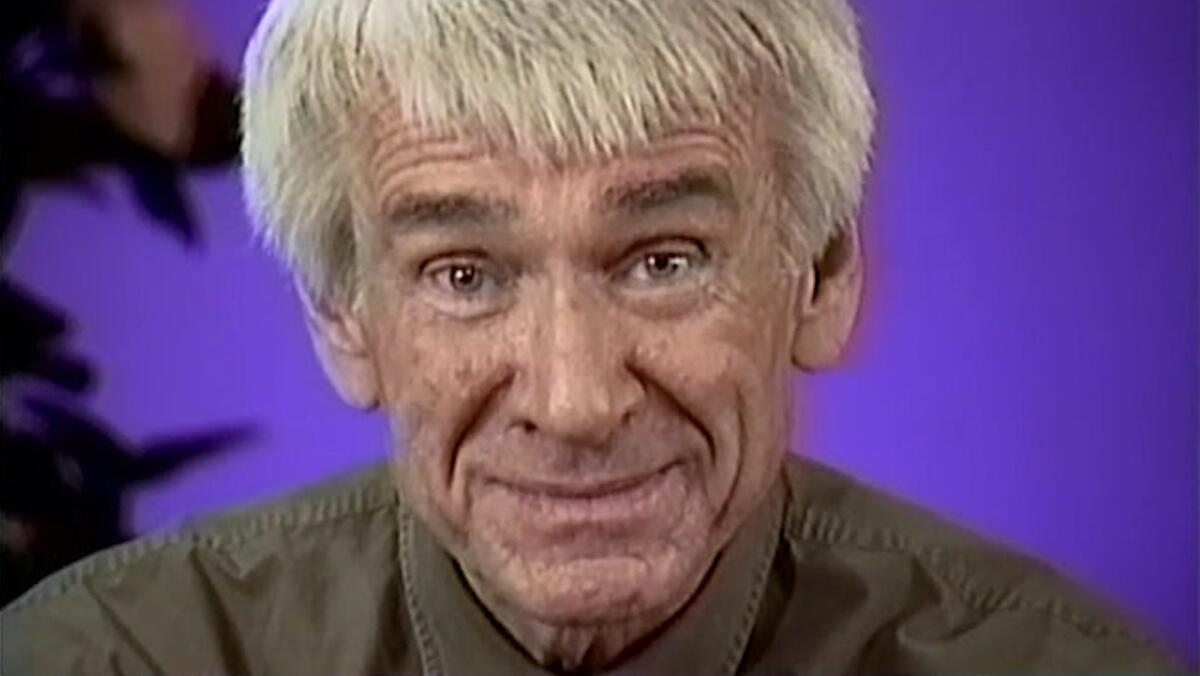
“Heaven’s Gate: The Cult of Cults” (Max)
In 1997, 39 members of Heaven’s Gate, a celibate religious sect, died in a mass ritual suicide timed to the approach of the Hale-Bopp Comet. The deceased, who had purple cloths draped neatly over their faces and wore identical black Nikes, believed they were going to be picked up in a UFO that would take them to the “Next Level,” a higher plane of existence. The cult — and its sporty choice in footwear — quickly became a national punchline, with members portrayed as hopeless crackpots who’d watched too many episodes of “Star Trek.”
But “Heaven’s Gate: The Cult of Cults,” a four-part series directed by Clay Tweel, goes beyond the wild-eyed caricature to tell the story of how Bonnie Lu Nettles and Marshall Herff Applewhite, spiritual seekers who befriended each other in the 1970s, renamed themselves “Ti” and “Do” and attracted a devoted following through beliefs that melded apocalyptic Christianity with the spaceships and extraterrestrials of science fiction. This empathetic four-part series, featuring interviews with former members and cult experts, reveals a group of people who were all too human, despite desperately wanting to be more.

“The Vow” (Max) and “Seduced: Inside the NXIVM Cult” (Starz )
These docuseries were released within weeks of each other in 2020 and took very different approaches to telling the story of NXIVM, a self-help multilevel marketing company turned “sex cult,” and its leader, Keith Raniere, who was accused of coercing women into sexual servitude, branding their flesh and going on highly restrictive diets. Raniere is now serving a 120-year prison sentence on racketeering and sex trafficking charges.
Directed by Jehane Noujaim and Karim Amer, “The Vow” follows NXIVM members Mark Vicente, Bonnie Piesse and Sarah Edmondson over the course of several years as they extricate themselves from the group. With lengthy recordings of furtive phone calls and extensive footage of Raniere waxing philosophically during late-night volleyball games doled out over nine elliptical episodes, “The Vow” takes its time to get to its most shocking revelations. (Season 2 focuses on Raniere’s trial.)
Directed by Cecilia Peck, “Seduced: Inside the NXIVM Cult” is more linear and direct — and faster to reveal the severity of Raniere’s crimes. The four-episode series focuses on India Oxenberg and her journey into — and out of — NXIVM, where she was allegedly groomed to become one of Raniere’s sexual partners. The series also follows her mother, “Dynasty” actress Catherine Oxenberg, as she fights to get her daughter out of the cult.
Jehane Noujaim and Karim Amer, who directed HBO docuseries “The Vow,” hope their series sheds light on the controversial organization at its center.
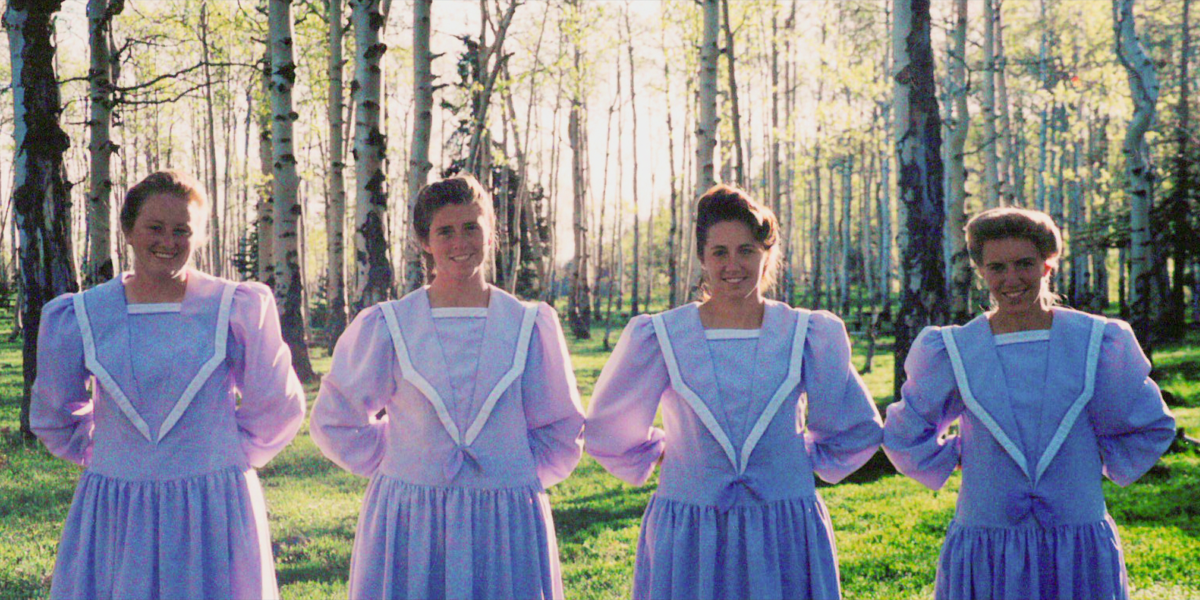
“Keep Sweet: Pray and Obey” (Netflix)
This four-part docuseries offers an in-depth look at the Fundamentalist Church of Jesus Christ of Latter-Day Saints, a polygamist sect whose leader and so-called prophet, Warren Jeffs, is serving a life sentence plus 20 years for the sexual assault of two girls. “Keep Sweet” includes archival footage, photos and audio recordings that demonstrate, with chilling clarity, how men claiming to be holy were able to sexually exploit women and children for decades. While there is some discussion of the prairie dresses and the elaborate braided hairstyles that captivated the media after the 2008 law enforcement raid on the Yearning for Zion Ranch in Texas, “Keep Sweet” focuses on the stories of survivors — impossibly brave women like Elissa Wall, who was married off to her abusive 19-year-old cousin at the age of 14 but later escaped and testified against Jeffs.

“Going Clear: Scientology and the Prison of Belief” (Max)
The Church of Scientology has been viewed with skepticism since the 1950s, when L. Ron Hubbard decided to repackage the contents of his self-help bestseller “Dianetics” as a religion. But the group’s public image took a devastating hit with the release of Alex Gibney’s eye-opening documentary, “Going Clear: Scientology and the Prison of Belief,” in 2015. Though it wasn’t the first exposé of the organization, the HBO film, based on “Going Clear: Scientology, Hollywood and the Prison of Belief” by New Yorker writer Lawrence Wright, brought a concise, damning critique from an Oscar-winning documentarian to the most prestigious network on television.
In just two hours, “Going Clear” covers a lot of ground: Though it paints Hubbard as an abusive scam artist, it makes the case that successor David Miscavige, who successfully battled the IRS to obtain tax-exempt status for the church, might be even worse. It outlines the core beliefs of Scientology: the auditing process, the “Bridge to Total Freedom,” the Xenu creation myth. Former church executives like Marty Rathbun and Mike Rinder detail the methods allegedly used to intimidate Scientology critics and keep prominent members like Tom Cruise in the fold. Most jaw-dropping of all is the archival footage unearthed by Gibney, including the music video “We Stand Tall” — so preposterous even Hubbard couldn’t have dreamed it up.
‘That ’70s Show’ actor Danny Masterson, a Scientologist, is charged with raping three former Scientologists who say the church tried to silence them.
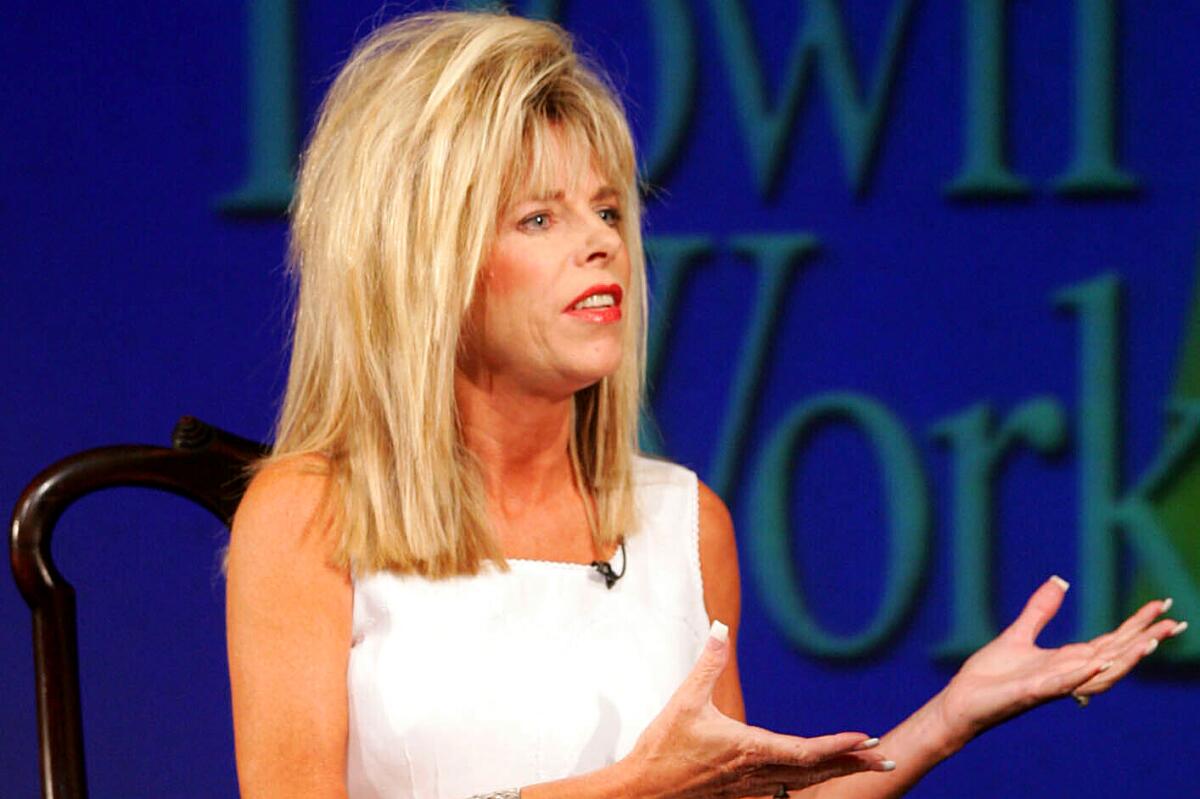
“The Way Down: God, Greed and the Cult of Gwen Shamblin” (Max)
Director Marina Zenovich was nearly done with postproduction on a docuseries about Gwen Shamblin Lara when the religious leader and diet guru died in a plane crash en route to a MAGA rally in Florida in May 2021. Known for her slight frame and gravity-defying hair, Lara was a trained dietitian who rose to prominence as the founder of a controversial faith-based weight-loss program called the Weigh Down Workshop and the leader of the Remnant Fellowship Church in Tennessee.
The first three episodes of the series examine Lara’s controversial weight-loss program, which taught that hunger could be overcome by being closer to God, and the allegedly abusive practices within her church. The final two installments look at how her unexpected death threw her religious and wellness empire into upheaval.
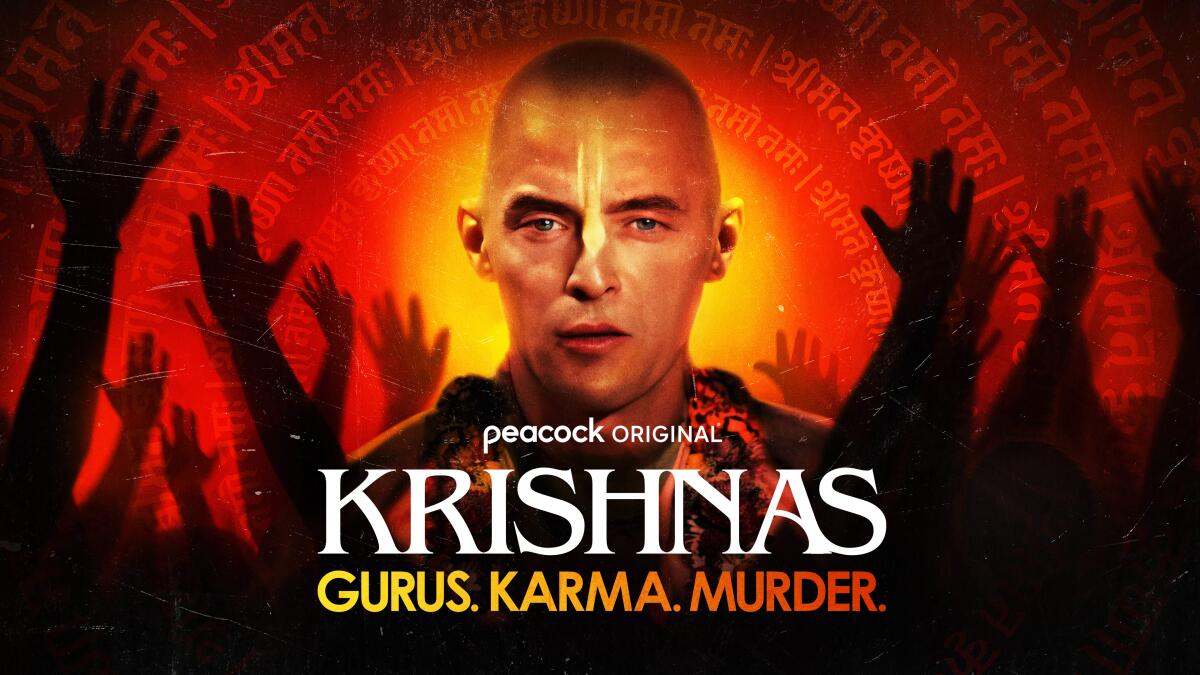
“Krishnas: Gurus. Karma. Murder.” (Peacock)
This three-part series explores a dark chapter in the story of the Hare Krishnas — a movement associated with hippies in orange robes handing out flowers at the airport. It explains how the group, formally known as the International Society for Krishna Consciousness, was founded by A.C. Bhaktivedanta Swami Prabhupada in 1966, and attracted young Westerners interested in counterculture spirituality. Before his death in 1977, Prabhupada appointed a handful of gurus to take over the movement. One of his hand-picked successors was Kirtanananda Swami, formerly known as Keith Ham, who ruled over New Vrindaban, a community in a remote corner of West Virginia. Kirtanananda pushed his followers to build a palace of gold in what was once a wilderness, but also inspired more sinister behavior — including murder, domestic violence and child abuse.
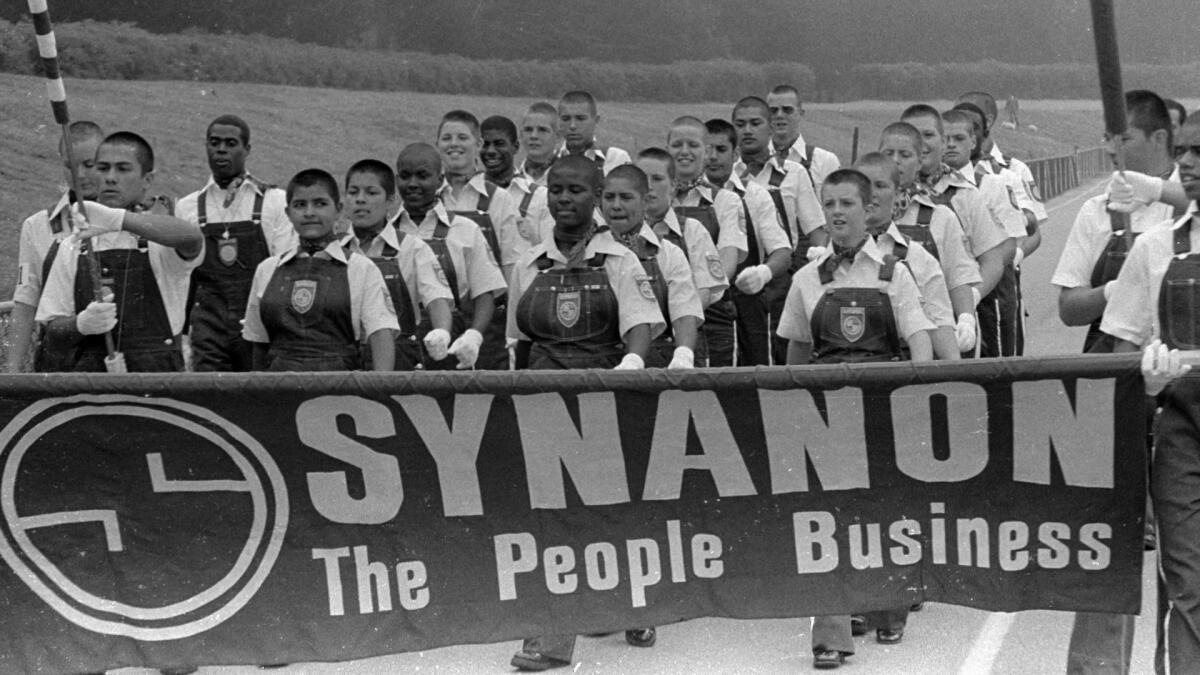
“Born in Synanon” (Paramount+)
Synanon was founded by Chuck Dederich in the 1950s as an unorthodox drug rehabilitation program whose participants engaged in a practice known as “The Game,” which involved facing scathing criticism from their peers. Within two decades, it had morphed into a violent, military-style cult with a cache of weapons whose members shaved their heads, wore uniforms and were sometimes ordered by the group’s leadership to undergo vasectomies or get divorced and take new partners. Directed by Geeta Gandbhir, this four-part documentary follows Cassidy Arkin, who was raised in the group, and her mother, Sandra Rogers-Hare, a former member, as they grapple with its legacy.
The complete guide to home viewing
Get Screen Gab for everything about the TV shows and streaming movies everyone’s talking about.
You may occasionally receive promotional content from the Los Angeles Times.